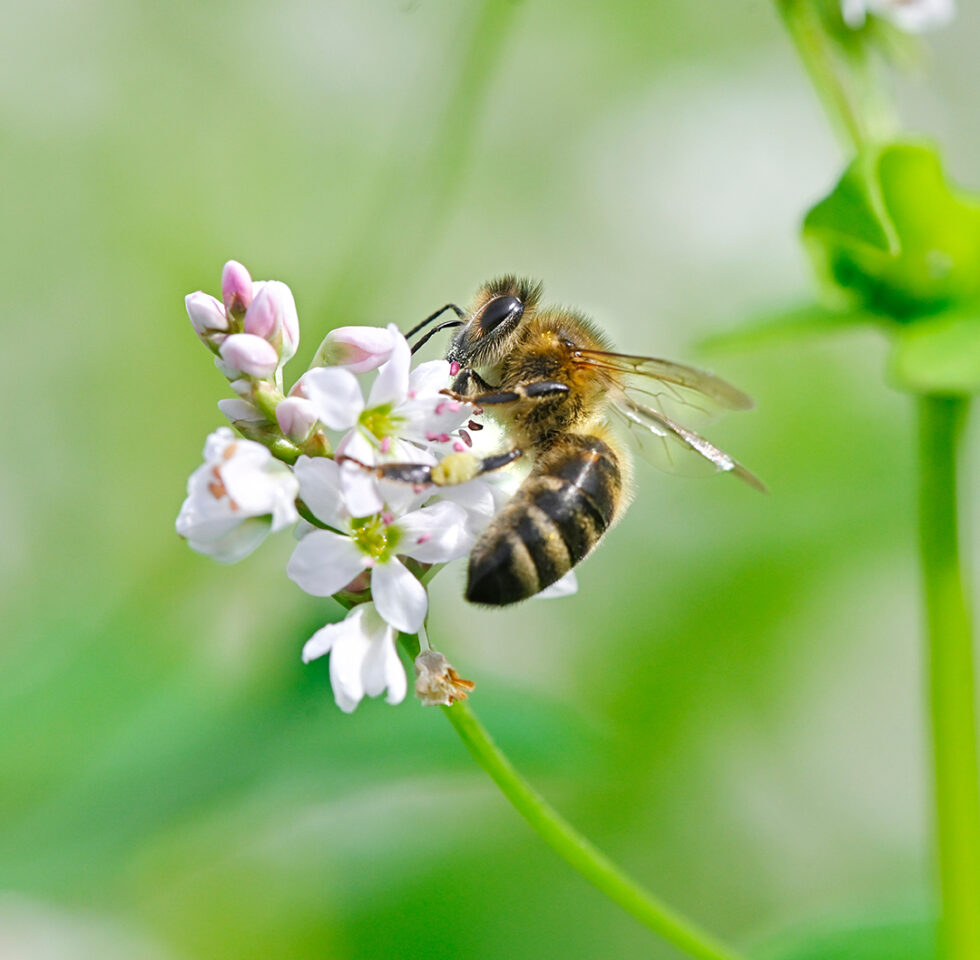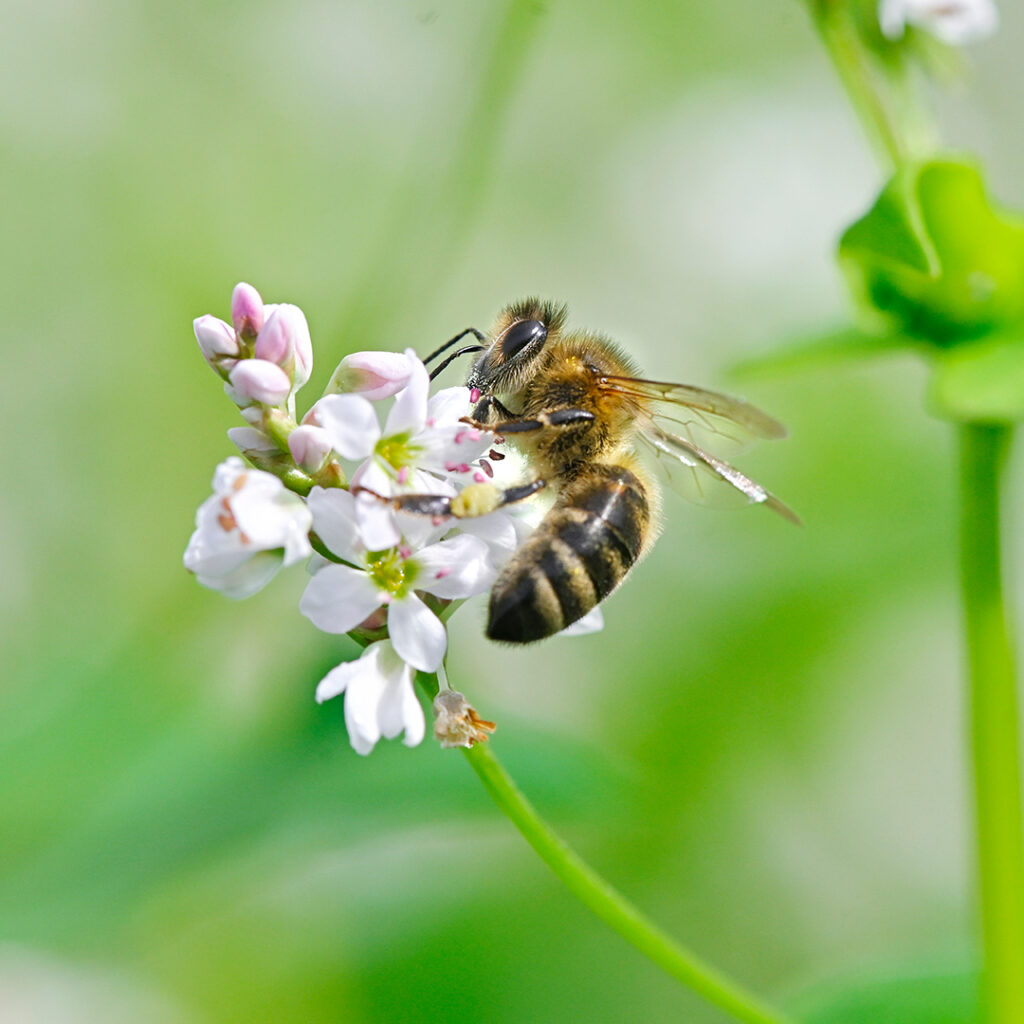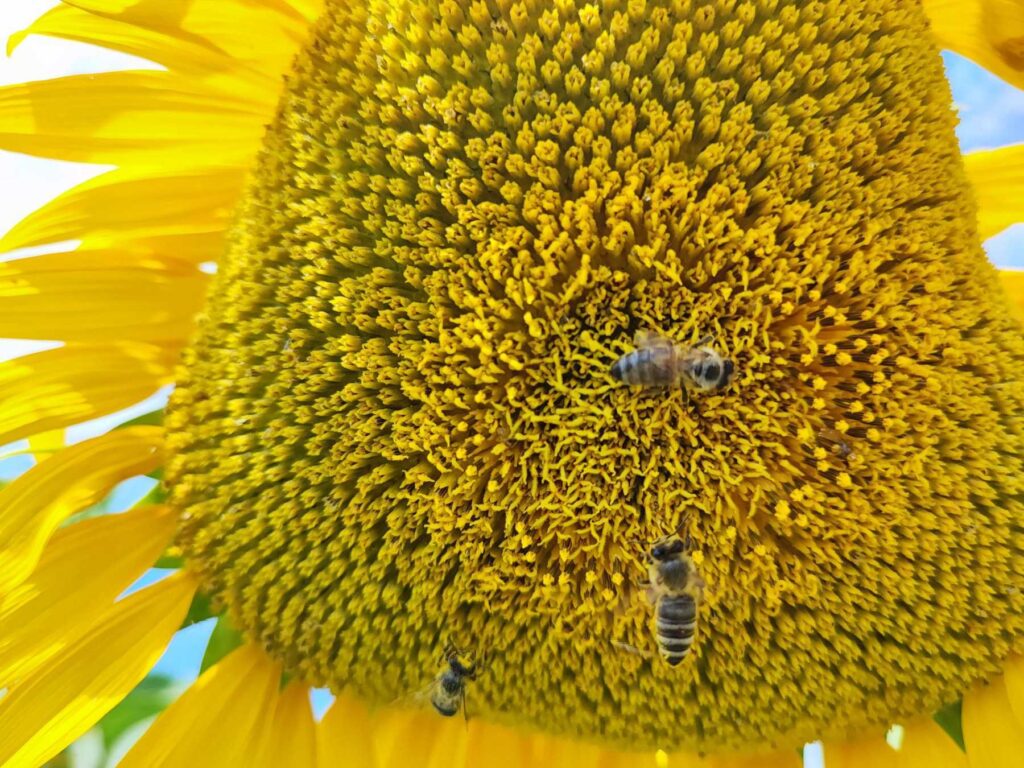Harvest Efficiency Redefined with LoginEKO Farming Software
July 24, 2024LoginEKO Farming Software redefines harvest efficiency, optimizing operations from planning to storage. Soon to be shared globally.
Read articleOn World Bee Day we have a story for you that ends almost without a harvest of buckwheat, because of bees. Do you want to know what happened?

Goran Radovanović thinks the story of buckwheat cultivation on LoginEKO’s fields in Vojvodina is “not a very good story.” This particular story ends almost without a harvest and, as such, is certainly not something that the Lead of Production would call a success. Even though he’s probably right when looking at it from his perspective, in many ways this is a great story of learning by doing and trying to find solutions in cooperation with nature. That’s in the best interest of people who want to enjoy good organic food.
Goran is one of the “veterans” on the team – not by age, but by his time spent at the organization. He started working at LoginEKO four years ago on a team of three people that has now grown to 26. At the time, they grew wheat and sunflower, but in 2020 they decided to expand the number of crops in order to practice crop rotation. The team was looking for something new, tasty, and healthy, and buckwheat seemed like a good solution.
The team knew that the climate in Vojvodina wasn’t exactly conducive to buckwheat cultivation and that the region is home to only a few small producers. They had the information that the plant prefers cold nights, temperate days, and hilly terrain. “Well, Vojvodina is definitely not a hilly region,” Goran explains. When consulting with other producers they were warned that buckwheat was difficult to grow, but “nobody told us how hard it was to harvest.” Conventional producers use chemical products, which LoginEKO actively avoids due to its commitment to 100% organic crop cultivation. “And we didn’t think about that at the beginning,” admits Goran.
LoginEKO had 4,400 hectares of available land and the team decided to try growing buckwheat on a plot of around 100 hectares. “We now know that was way too much,” says Goran, “but we learned this only after the harvest.” Goran and the team decided to sow the same variety of buckwheat on two different locations at different times to see what worked best. First, this was done in April last year on two small heavy soil fields, covering a total of 30 hectares. Then, later in May, the process was repeated on a field of almost 70 hectares with better, lighter soil.
“After a month, the big field was looking really good. The smaller ones sprouted some weeds so we opted for mechanical weed control and the results were okay, but not perfect,” says Goran. The team talked to beekeepers to make sure bees would visit those fields, because they knew how vital pollination was at that point. Unfortunately, they weren’t very successful. One of the reasons was that the field was located far from the main road and wasn’t easily accessible to beekeepers who’d come every day to check on the bees. Luckily, the two smaller fields were closer to the road and to the bees.

When it was finally time to harvest the buckwheat, Goran’s team faced a new set of challenges. The stems on the two smaller fields were green or reddish, but not ripe. They had no experience with harvesting a green crop, so they needed to figure out how to adjust the harvester. The team reached out to other producers for advice only to find out they were used to solving this problem with herbicides – not an option for LoginEKO. If they waited until autumn, the plants would be bare of grain. They needed to come up with a solution fast so they tried different options of harvesting. The first was done in two steps: mowing the plants then harvesting. This proved impractical because they lost a lot of grain in the process – they realized they didn’t have the right type of mower. Their distributor could help them with that, but only in two or three weeks, which was too late. So, they had no choice but to harvest with the equipment they had at their disposal. They managed to achieve what Goran called “a relatively good result” (putting a lot of emphasis on the word “relatively”).
Their first small field gave them 400 kg and the second 600 kg of grains per hectare. Goran put this into perspective: “Big buckwheat producers at the time collected 3 tons of grains per hectare.” Unfortunately, much of the reason for their success was due to the use of herbicides. “But that’s not good for human consumption.” Our organic approach to production was also much more expensive, so Goran and his team didn’t manage to sell it for a good price, meaning the profit margin was very low. But hey, we still have the big field, which bloomed so beautifully and didn’t have any weeds, right?
Well, not really. Goran and his team realized the plants on that field were barren. Can you spot the bee in the picture?

Well, there wasn’t any on our field. The beekeepers confirmed their suspicion: no grains means there was no pollination. They had no choice but to cut down the plants and use them for green manure. “So that’s the story of our 100 hectare buckwheat experiment,” concluded Goran.
Nevertheless, this story’s not a sad one. LoginEKO hasn’t given up on buckwheat yet. It’s true that the big field was barren of crops for the following two years too, but the experiment proved to be a valuable experience that sparked a few new ideas we wanted to try out. We couldn’t know how hard it is to get the bees to visit a field if we hadn’t tried (and failed) with buckwheat. So one of the first lessons we put into practice was to make sure the sunflower fields had enough pollinators. The team struck concrete deals with beekeepers about the position and number of beehives. This too is very important. The buckwheat field that ended up barren was visited by wild bees, but they were far too few to get the job done.
So with this in mind, are the sunflower fields more accessible and therefore more attractive to beekeepers that bring in the hives? “Not really,” smiles Goran, “but they don’t have a choice. Buckwheat blooms at the same time as acacia, which serves as good pasture for bees, while also being more lucrative due to the popularity and price of acacia honey. So, beekeepers aren’t really motivated to place the beehives near buckwheat if they can place them near acacia. But when the sunflowers bloom there’s no such competition, and the beekeepers can’t afford to be picky.”
Having our own beehives for pollinating buckwheat is one option we haven’t tried yet at LoginEKO. We continue cultivating buckwheat, but on a smaller scale. We want to improve the pollination and the harvesting method, and are testing these on a 0.4 hectare field. “We think this is the right approach for new crops that we don’t have any experience in cultivating. Then, if we succeed, we can expand to a couple of hectares, observe the technology, learn, and then expand some more. We need to constantly improve our harvesting technology,” says Goran.
He adds that the right variety of buckwheat might also be important, but that at present, the law in Serbia allows only one type of buckwheat to be sown. “We have to learn a lot more about buckwheat and test more factors.” Goran knows they might not find a solution for all the problems, and maybe they’ll come to the conclusion that the climate and soil in Vojvodina are simply not suitable for buckwheat production. “So this might not turn out to be a success story, but it’s a valuable story of our experience so that other producers don’t repeat our mistakes,” concludes Goran.
And this is exactly what makes it such a good story.
LoginEKO Farming Software redefines harvest efficiency, optimizing operations from planning to storage. Soon to be shared globally.
Read articleWhat if we told you that sunflower seeds you buy were sprayed with 9 active ingredients in pesticides? What if we told you this wouldn't have been necessary?
Read articleLoginEKO's moves into gluten-free farming tapping into rising consumer trends for a healthier market niche.
Read article